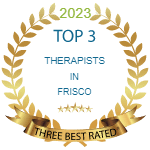Catatonia is a neuropsychiatric syndrome characterized by a range of motor dysfunctions, altered consciousness, and peculiar behaviors.
While historically associated with schizophrenia, catatonia can occur in various psychiatric, neurological, and medical conditions.
In this article, we’ll dive into the symptoms, causes, diagnosis, and treatment options for catatonia, highlighting this complex and often misunderstood condition.
Symptoms of catatonia
There is a variation of symptoms that can show in patients of catatonia, and can differ in severity and presentation. Some common symptoms include:
- Stupor: Individuals with catatonia may suffer from a state of immobility and unresponsiveness, known as stupor. They may also remain in fixed positions for extended periods without responding to external stimuli.
- Motor disturbances: Catatonia can involve abnormal movements such as repetitive motions, posturing (assuming rigid or bizarre body positions), and catalepsy (maintaining a posture against gravity).
- Mutism and echolalia: Some individuals with catatonia may experience mutism, where they are unable to speak, or echolalia, where they repeat words or phrases spoken by others.
- Negativism: Patients may demonstrate negativism, resisting or opposing attempts to move them or change their position.
- Agitation: While catatonia is often associated with immobility, some individuals may display agitated behavior, including purposeless movements or restlessness.
What are the different types of catatonia?
The latest edition of the Diagnostic and Statistical Manual of Mental Disorders (DSM–5) no longer categorizes catatonia into types. However, many psychiatrists still classify catatonia into three types:
- Akinetic catatonia is the most common catatonia type that causes slow movement. A person with akinetic catatonia may stare into space and often stop speaking.
- People with excited catatonia appear “sped up,” restless, and agitated. They sometimes engage in self-harming behavior. This form is also known as hyperkinetic catatonia.
- Patients with malignant catatonia may experience delirium. They often have a fever and may have a fast heartbeat and high blood pressure.
Causes of catatonia
Catatonia can occur from various underlying conditions, including psychiatric disorders, medical illnesses, neurological conditions, and substance abuse. Some common causes include:
- Schizophrenia and other psychotic disorders: Historically, catatonia has been closely linked with schizophrenia, and it can also occur in other psychotic disorders such as bipolar disorder and major depressive disorder with psychotic traits.
- Mood disorders: It may occur in patients with mood disorders, particularly in severe cases of depression or bipolar disorder.
- Neurological conditions: Certain neurological conditions, such as encephalitis, epilepsy, stroke, and Parkinson’s disease, are associated with catatonic symptoms.
- Medical illnesses: Catatonia may be associated with medical conditions such as autoimmune disorders, metabolic disturbances (e.g., thyroid dysfunction), infections, and brain tumors.
- Substance use: Certain substances, including alcohol, benzodiazepines, and other sedative-hypnotic drugs, can induce catatonic states, either through intoxication or withdrawal.
How to diagnose catatonia?
Diagnosing catatonia requires a comprehensive evaluation by a qualified mental health professional, typically a psychiatrist or neurologist. Diagnosis is based on clinical observation and assessment of symptoms, often guided by standardized rating scales such as the Bush-Francis Catatonia Rating Scale (BFCRS).
Popular treatments
The management of catatonia depends on the underlying cause and severity of symptoms, such as:
- Pharmacotherapy: Benzodiazepines, particularly lorazepam, are considered first-line treatment for catatonia due to their rapid onset of action and efficacy in relieving symptoms. Antipsychotics may be used cautiously in cases of catatonia associated with schizophrenia or other psychotic disorders.
- Electroconvulsive therapy (ECT): ECT is a highly effective intervention for severe catatonia, particularly when rapid stabilization is needed or when patients do not respond to pharmacotherapy.
- Supportive care: Hospitalization may be necessary in severe cases to provide close monitoring, hydration, and nutritional support. Physical therapy and occupational therapy may help prevent complications such as muscle contractures and promote functional recovery.
- Addressing underlying causes: Identifying and treating any underlying psychiatric, medical, or neurological conditions contributing to catatonia is essential for long-term management and prevention of recurrence.
Explore your options at Kazmo Brain Center
Catatonia is a complex neuropsychiatric syndrome characterized by a diverse array of symptoms, ranging from motor disturbances to altered consciousness.
At Kazmo Brain Center, our mental health professionals will guide you on your way to treat any type of cases.
Contact us today to explore your options: https://kazmobrain.com/contact-us/







